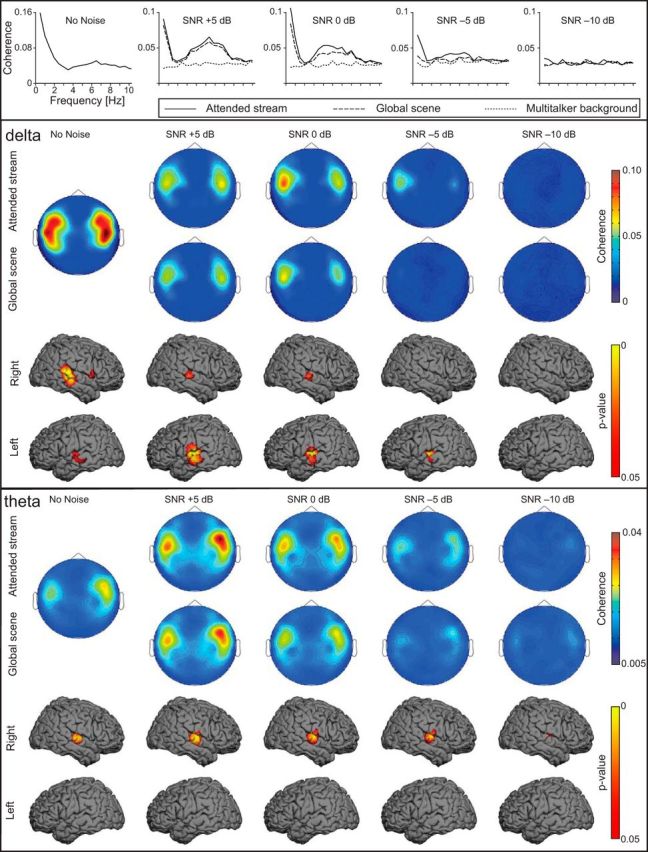Figure 4.

Sensor and source-space results obtained for the listening conditions. Top, Mean coherence spectra representing the arithmetic mean of the 20 individual maximum coherence spectra when coherence was computed between MEG signals and the envelopes of the different components of the auditory scene. Middle, Top, Group-level gradiometer sensor space coherence in the δ band (∼0.5 Hz). Higher coherence values were found at the temporal-lobe sensors (with a left hemisphere dominance) when coherence was computed between MEG signals and the Attended stream (Cohatt) than with the Global scene (Cohglobal). Coherence decreased as the level of the Multitalker background progressively increased. The sensor array is viewed from the top. Middle, Bottom, Group-level source space coherence in the δ band when the coherence was computed with the Attended stream (Cohatt). Group-level p value coherence map disclosed local coherence maxima at the superior temporal gyrus bilaterally with left hemisphere dominance in the noisy conditions. Bottom, Top, Group-level gradiometer mean sensor space coherence in θ band (4–8 Hz). Higher coherence values were found at the temporal-lobe sensors (with a right dominance) when coherence was computed between MEG signals and the Attended stream (Cohatt) than with the Global scene (Cohglobal). Coherence values decreased with increasing noise level. Bottom, Bottom, Group-level source space coherence in θ band when the coherence was computed with the Attended stream (Cohatt). Group-level p value coherence map disclosed significant coherence maxima at the right supratemporal auditory cortex in every listening condition.
